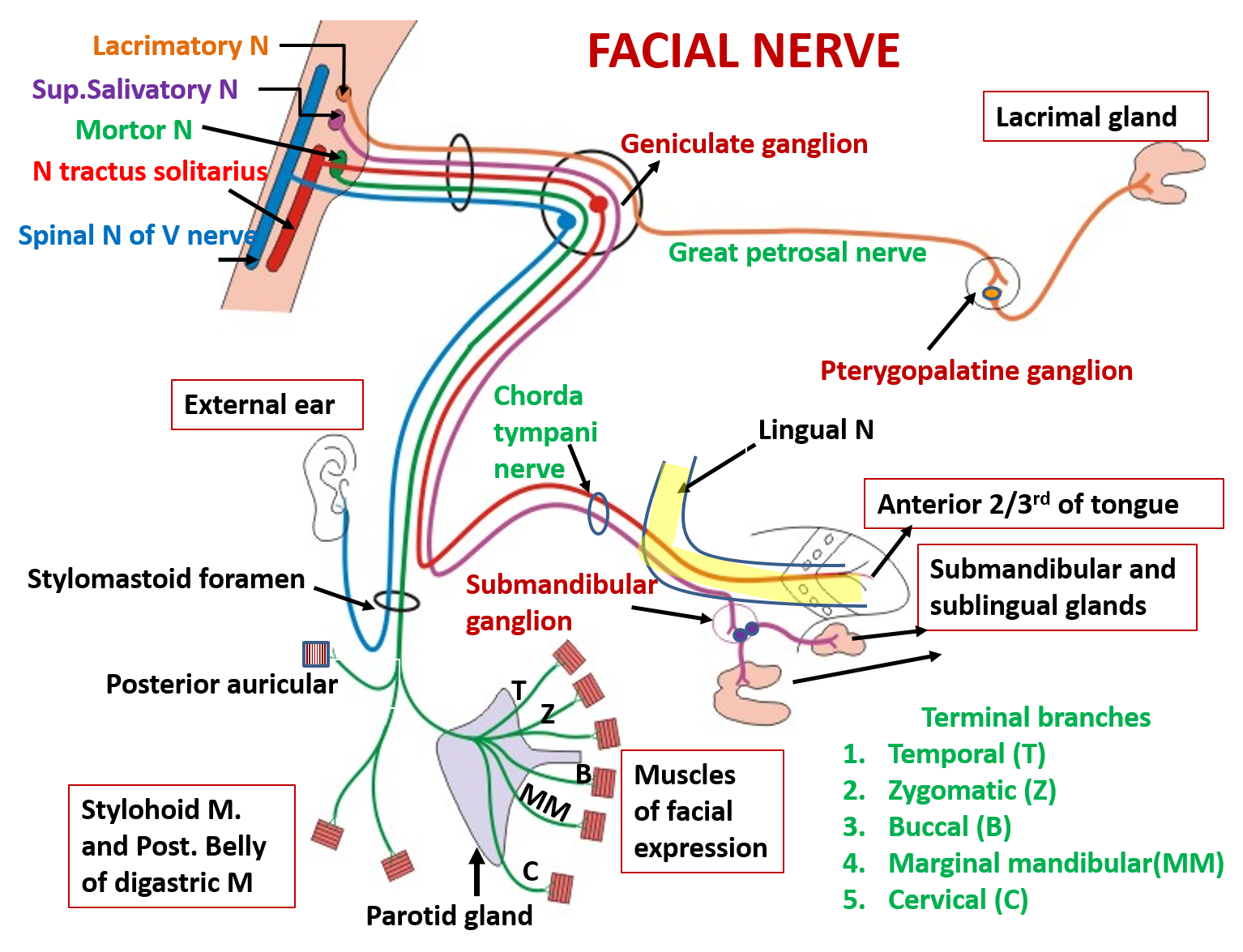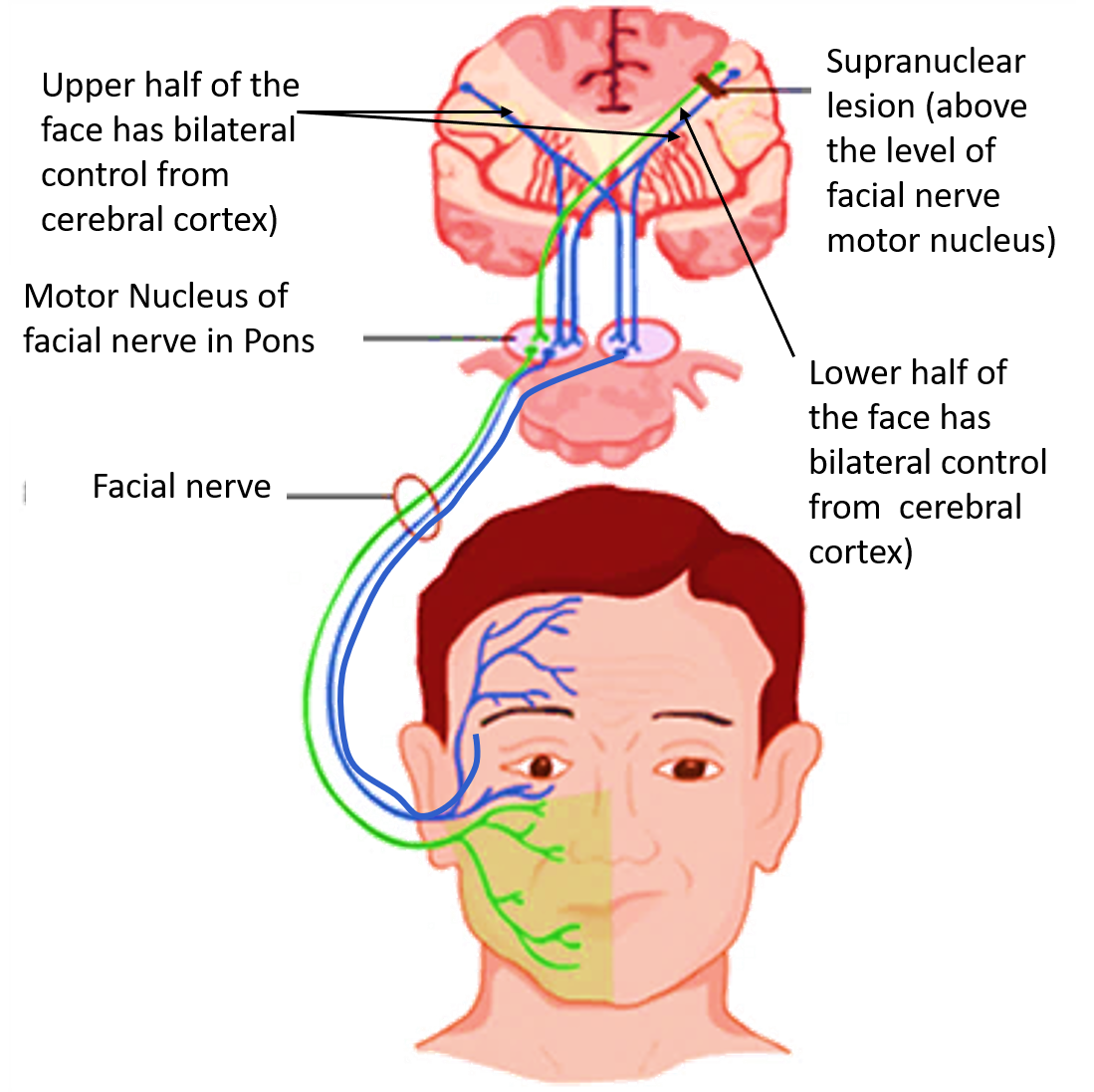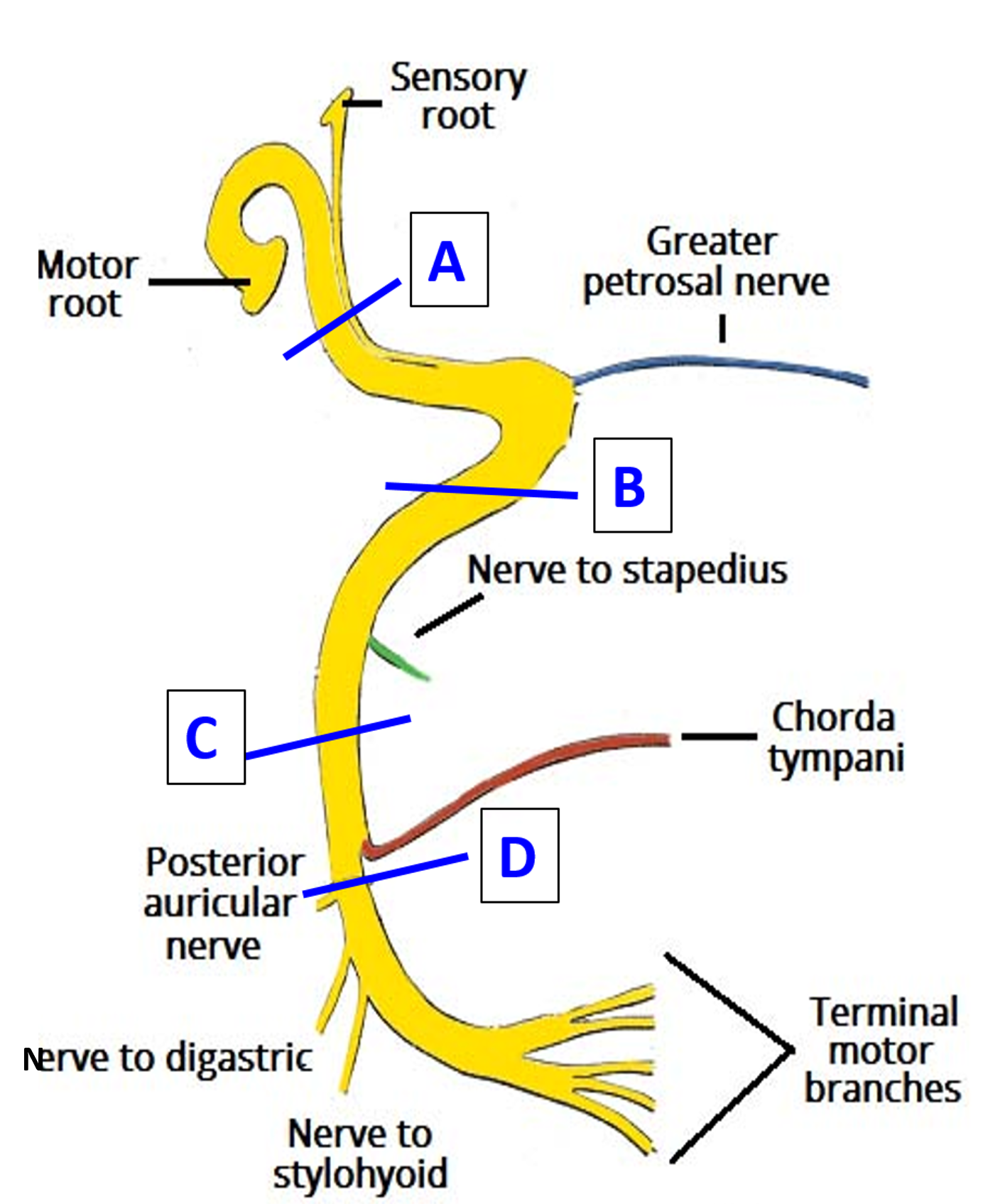Describe the origin and course of facial nerve.
Facial nerve is the seventh cranial nerve. It is a mixed (sensory and motor) nerve.
Origin:Its nuclei lie in the lower part of the pons.
Course
- Facial nerve emerges at the lower border of pons as two roots, large medial motor root and a small lateral sensory root (nervus intermedius).
- It leaves the cranial cavity by passing through the internal acoustic meatus.
- It then enters the facial canal which is divided into three segments viz. labyrinthine, tympanic and mastoid.
- Labyrinthine segment : It lies here above the vestibule of internal ear and passes laterally to reach the medial wall of middle ear where it bends (external genu – location of geniculate ganglion) sharply backwards.
- Tympanic segment: The nerve here runs horizontally backward along the medial wall of the middle ear till it reaches the junction of medial and posterior wall of middle ear.
- Mastoid part: It then passes vertically downward in this part along the posterior wall of middle ear to reach the stylomastoid foramen.

Name the nuclei, functional components of facial nerve .
Following are the nuclei, functional components of facial nerve:
Functional component Nuclei Structures innervated SVE (Special visceral efferent) Motor nucleus of facial nerve All the muscles derived from 2nd branchial arch- Occipitofrontalis, Muscles of face, Platysma, Stapedius, Posterior belly of digastric,Stylohyoid GVE (General visceral efferent) Superior salivatory nucleus Secretomotor fibers to submandibular and sublingual gland Lacrimatory nucleus Secretomotor fibers to lacrimal gland SVA(Special visceral afferent) Nucleus of tractus solitarius Carry taste sensation from anterior 2/3rd of tongue (except circumvallate papillae) GSA (General visceral afferent) Spinal nucleus of trigeminal nerve Few cutaneous fibers from external ear
Name the branches and structures supplied of facial nerve.
Branches in the facial canal
- Greater petrosal nerve (from geniculate ganglion) – supplies secretomotor fibers to lacrimal, nasal and palatine glands.
- Nerve to stapedius – supplies stapedius muscle.
- Chorda tympani nerve – carries taste sensation from anterior 2/3rd of tongue ( except circumvallate papillae) and supplies secretomotor fibers to submandibular and sublingual gland.
Branches below the stylomastoid foramen
- Posterior auricular nerve– supplies occipital belly of occipitotemporalis and auricular muscles.
- Nerve to posterior belly of digastric and stylohyoid muscles.
Branches on face (given within parotid gland)
- Temporal nerve
- Zygomatic nerve
- Buccal nerves – upper & lower
- Marginal mandibular
- Cervical
These five branches supply muscles of facial expression and buccinator muscle.

Applied Aspects
Facial nerve lesions
Supranuclear lesion
- Muscles of the lower part of face of opposite side are paralysed.
- Muscles of upper part of face are spared because they are controlled by both the cerebral hemispheres.

Infranuclear lesion
Symptoms depend on the site of lesion:

Lesion at ‘D’: At the stylomastoid foramen (Bell’s palsy)- paralysis of all the muscles of facial expression on the same side. Symptoms of Bell’s palsy are:
- Marked facial asymmetry
- Atrophy of facial muscles
- Can’t close eye
- Tears overflow
- Smoothing out of forehead and nasolabial folds
- Drooping of corner of mouth
- Food accumulates in vestibule of mouth
Lesion at ’Ç’: Above the origin of chorda tympani- all the symptoms of lesion (i) and decreased salivation and loss of taste sensation from anterior 2/3rd of the tongue.
Lesion at ‘B’: Above the origin of nerve to stapedius- all the symptoms of lesion (i) and (ii) and hyperacusis.
Lesion at ‘Á’: At the geniculate ganglion-: all the symptoms of lesion (i) and (ii) and(iii) and loss of lacrimation.

I like the way of explanation of the note it is short an presides
So thanks for all
This is by far one of the most amazing websites I’ve ever come across, I’m currently studying to finish my master’s in Applied Anatomy, and I can’t tell you how concrete and direct these posts are. I will be looking forward to using this in the coming years as I get ready for medical school 🙂